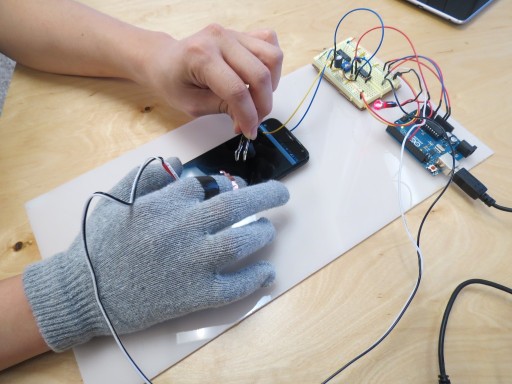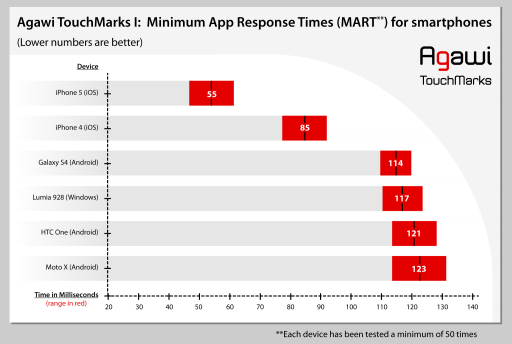Apparently the game and app streaming company, Agawi, has been conducting tests to measure the responsiveness of touchscreens in modern smartphones, including devices based on iOS, Android and Windows Phone 8. Agawi provides multi-platform cloud streaming solutions which stream apps running in the cloud to the devices in question. According to them, touchscreen latency is critical to the effective functioning of their apps.
In order to measure touchscreen latency, they came up with TouchMarks, a benchmark that measures the Minimum App Response Time (or MART) of a smartphone, which is basically the minimum time a smartphone takes to respond to touch input. It does this by flashing the complete screen white as soon as a touch is registered. It claims to use minimal logic and OpenGL/Direct X rendering to do so.
According to the results of the test, the iPhone 5 basically smoked the competition, with the iPhone 4 being a distant second. The Galaxy S4 came in third, being closely tailed by the Lumia 928.
A Few Things to Keep In Mind
Even though the benchmark basically screams from the mountaintops that the iPhone destroys the competition, there are a few very important characteristics we should keep in mind before jumping to any conclusions:
1. The test only measures touchscreen latency.
Touchscreen latency is only one of the multitude of factors which result in the performance we see from our devices. The test basically ignores frame rates or smoothness of a device, which translates more directly to an end-user experience.
2. The test uses OpenGL ES rendering.
Just as a little reminder, Android recently switched to Open GL ES 3.0 in Android 4.3 Jelly Bean. As did iOS with the iPhone 5S. While a broader swath of Android devices support it, it is limited to the iPhone 5S on the iOS side. How that impacts the results is yet to be seen.
The test measures how long it takes for a phone to respond upon registering touch input, but in terms of real world use, it also matters what phones do with that input once they have received it. In those terms, hardware these days is getting more and more proficient at keeping phones responsive overall, as is proved by the recent portfolio of Android flagship devices, as well as Windows Phones.
Source: Agawi
Via: VentureBeat







